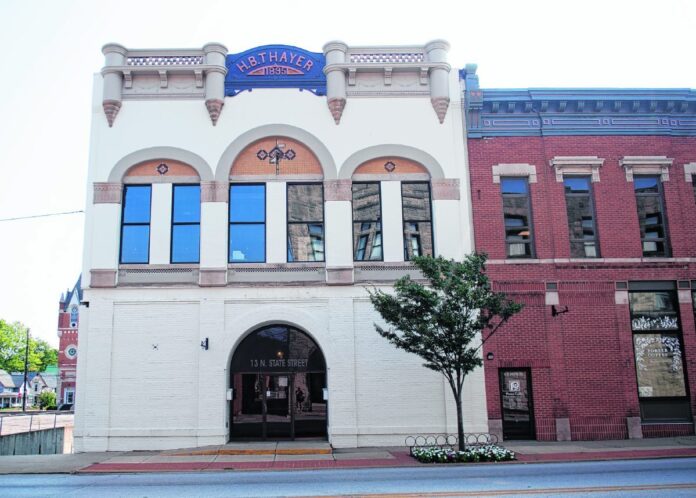
GREENFIELD — Officials are preparing for a part of the city’s future by remembering its past.
They’re considering updating design guidelines for Greenfield’s historic district located downtown. Welcoming development while protecting character is the goal, and a consultant who’s made a career of historic preservation recently shared advice on how they can accomplish it.
Pat Jacobs, principal of Indianapolis-based ARCHitecture trio, spoke at a recent meeting of the Greenfield Historic Board of Review. Jacobs formerly worked for the Indianapolis Historic Preservation Commission and was later hired to create design guidelines for Indianapolis’ Monument Circle Historic District.
She said historic preservation is especially important for places like Greenfield when considering how many people are moving out of large cities and into rural areas and smaller cities.
“How can we take the built environment that establishes who we are and what it says about us and begin to utilize things such as design guidelines and our historic preservation boards to protect those things that are near and dear to our hearts in the small communities?” Jacobs said.
Determining an answer to that question, she continued, involves identifying what the city doesn’t want to compromise on and being ready to say no.
The more help in making that determination, the better, Jacobs said.
“Having the most participation in your community is really important, because it begins to establish what’s valuable, and that changes over time,” she said. “So it’s always good to have that discussion first and then start hashing out the details.”
Jacobs also went over scenarios board members may find difficult and ways to make them easier to navigate. One example is property owners being unable to afford to make a change or the right historic preservation decision on a project. If the board feels a concession is warranted, it could establish a precedent other property owners may try to take advantage of to avoid historical preservation practices they can otherwise afford. But, Jacobs continued, the board could remedy that by establishing a policy requiring owners to provide substantiating reasons for being unable to carry out any preservation requirements.
Joan Fitzwater, Greenfield’s planning director, said it’s important to keep in mind historical characteristics that are worth altering. For instance, trees weren’t commonplace in downtowns historically, but studies have indicated they draw shoppers, which is part of the reason downtown Greenfield streets are lined with trees today.
“It’s all of the elements of a streetscape that create that character,” Fitzwater said. “It’s not just the buildings or just the signs; it’s everything.”
Jacobs said officials should also keep in mind accessibility, something that wasn’t a priority historically but is now required by law.
Fitzwater and Jacobs reminded board members there will be instances in which projects will not only have to follow local guidelines, but federal ones as well if federal grant dollars are being used to assist with funding.
That’s the case for proposals for the 125-year-old H.B. Thayer building on the east side of State Street just north of Main Street. The property presents a unique situation, Jacobs said, as its owner wants to change the front of the first floor of the building. At first, she suspected the owner’s idea would compromise the property’s historical character too much. But then she discovered its current appearance was added later on into its existence and that the owner wants to return it to an appearance more aligned with its earliest days.
Jacobs said when state officials weigh the proposals against federal historic preservation guidelines, they’ll have to determine whether how the building appears now is a reflection of its changes over time that have reached their own level of significance, or if that would be outweighed by an appearance closer to the one the building had at the turn of the 20th century.
Jacobs’ guidance left historic board of review member Tom Strickland feeling educated and excited.
“It was not only informational, but a bit of a pep talk as well,” he said. “Sometimes we need that, I think.”




